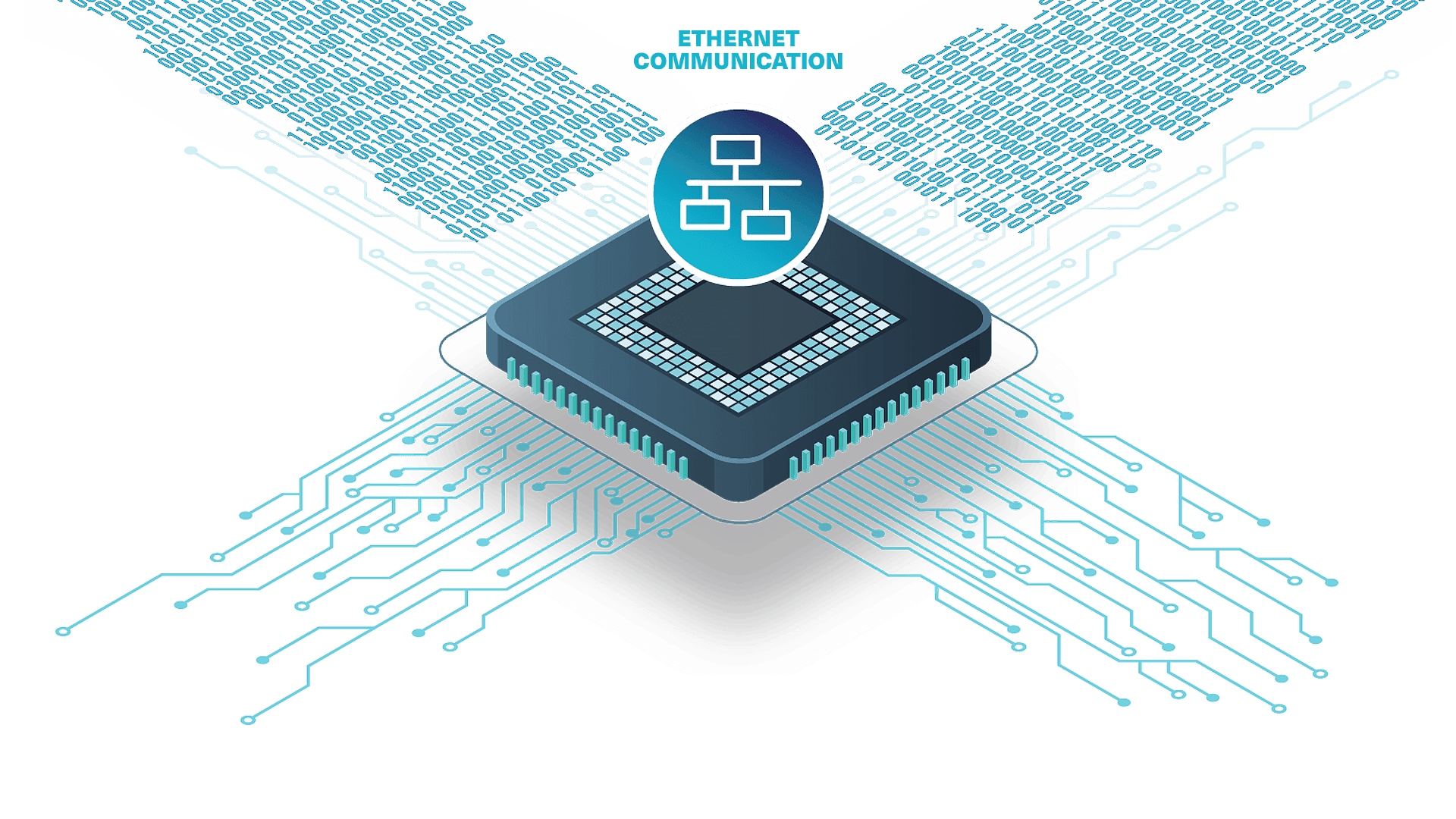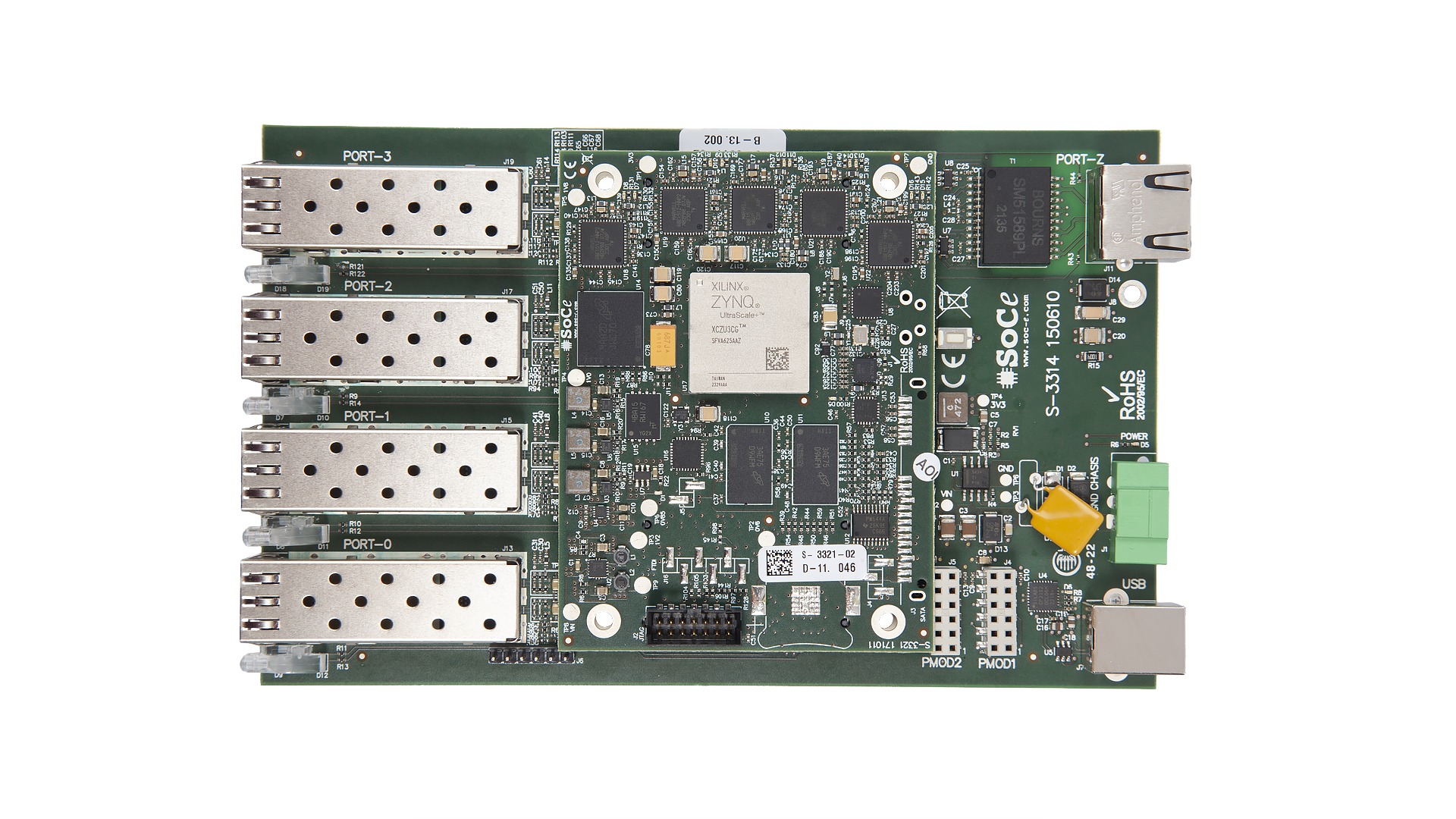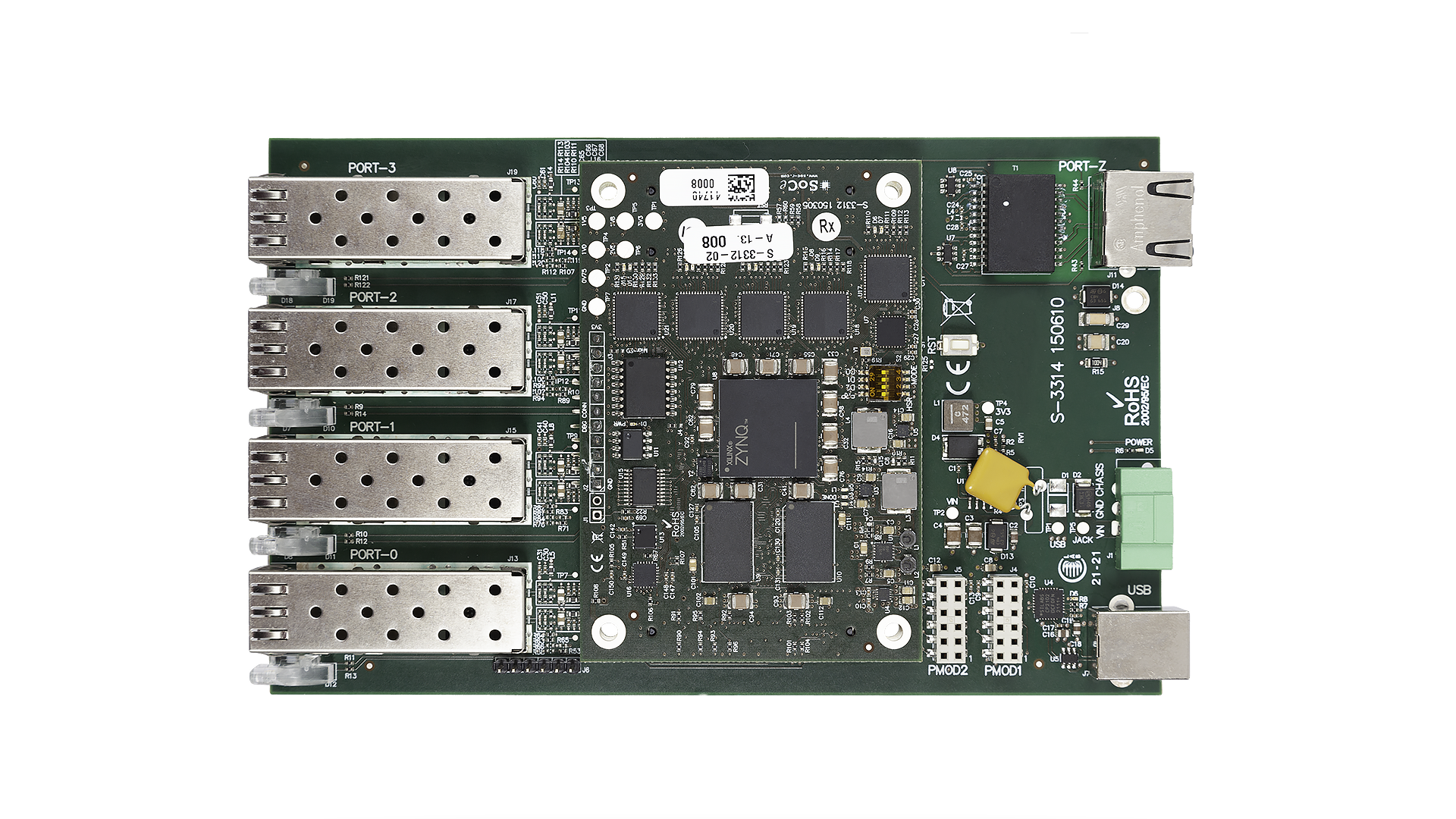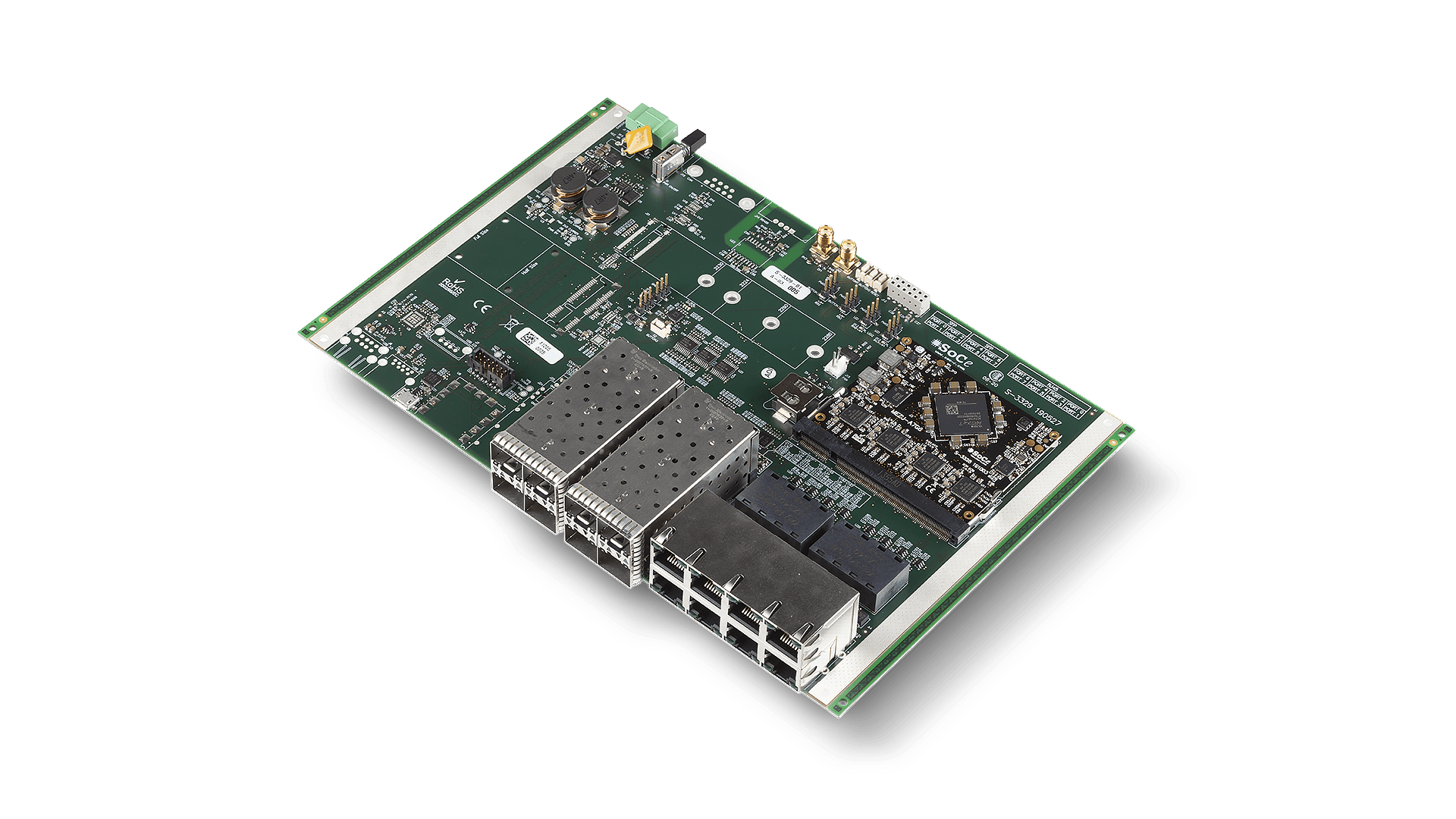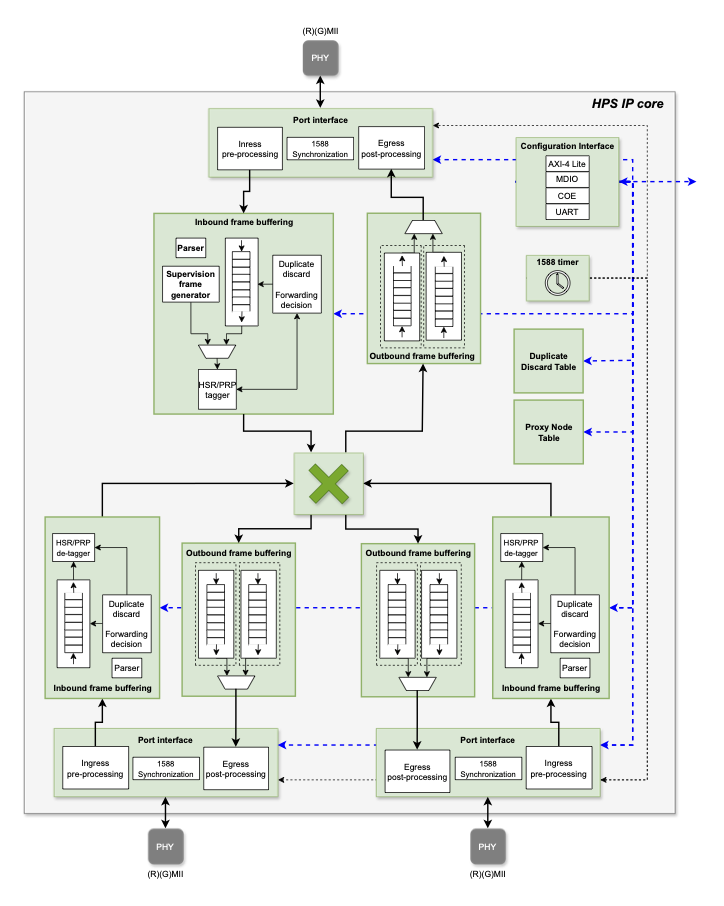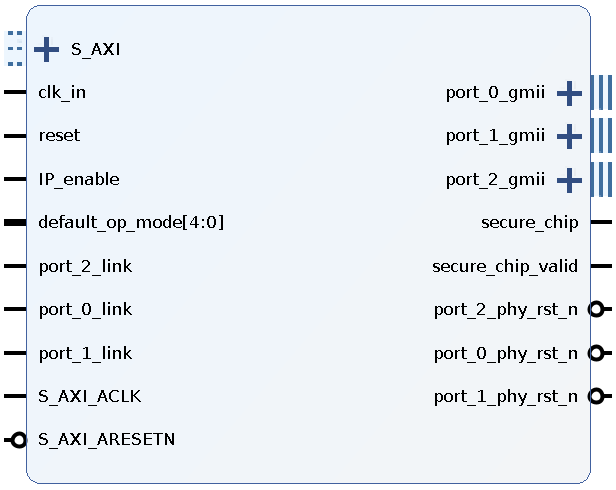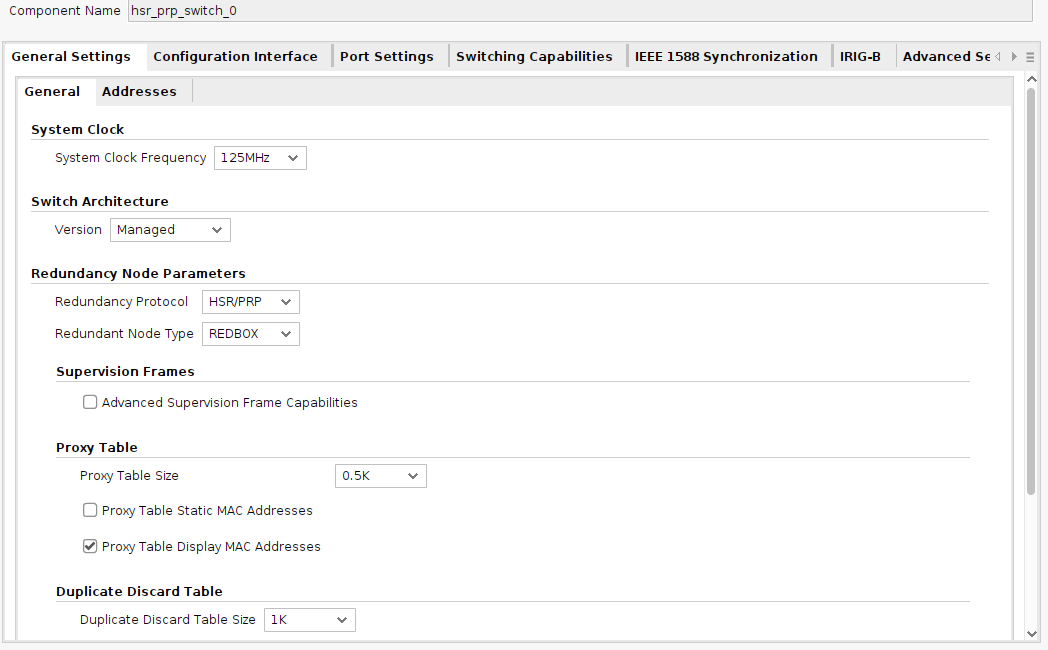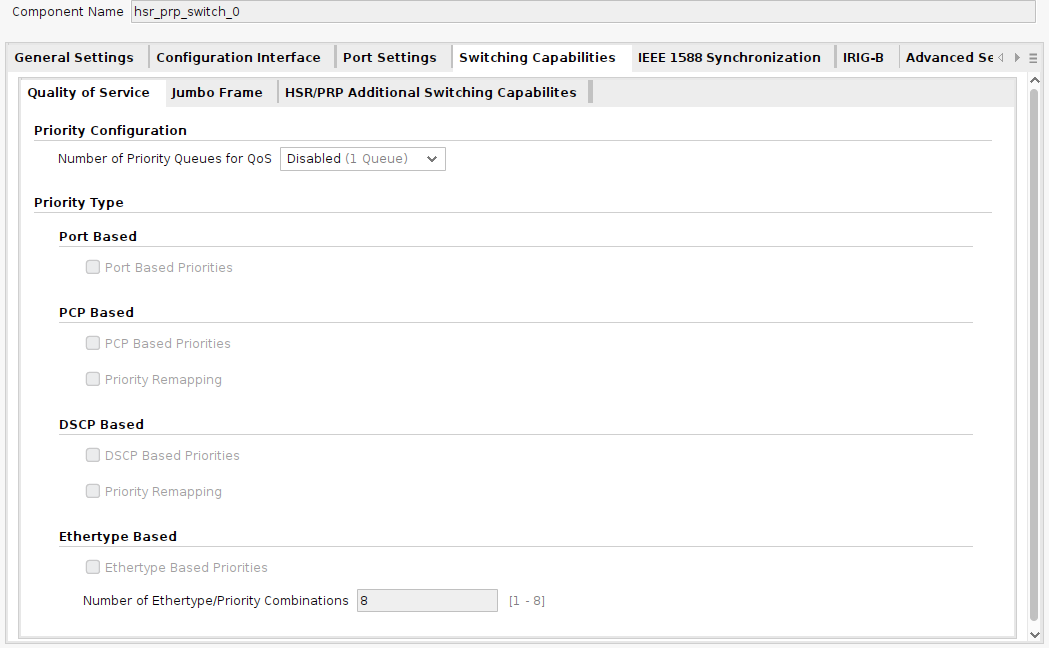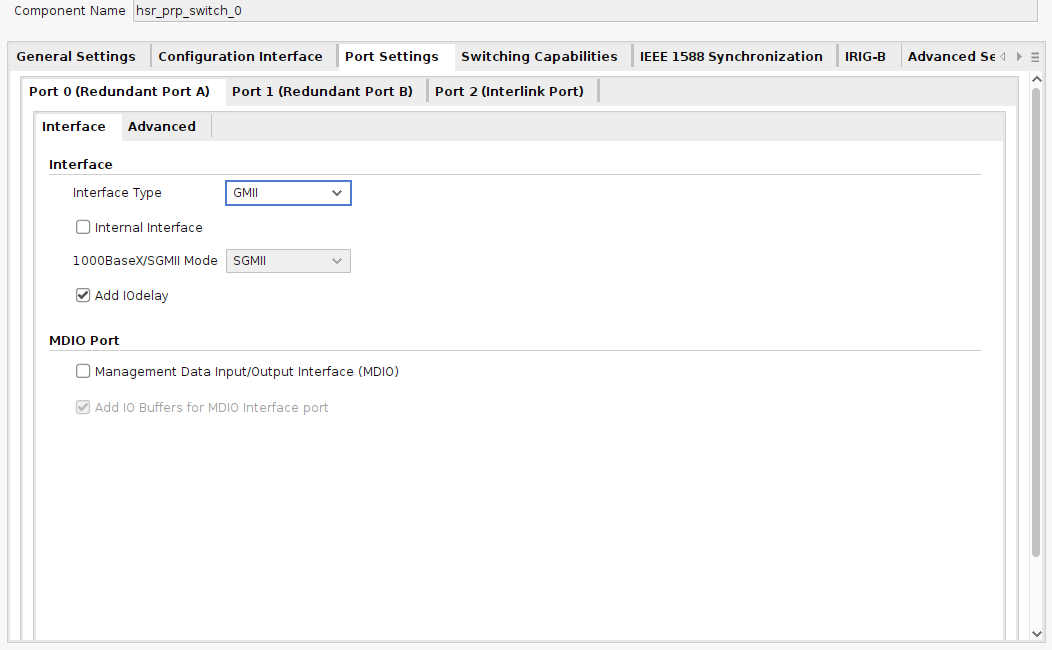Overview
HPS implements the High-availability Seamless Redundancy and Parallel Redundancy Protocol (HSR and PRP, IEC 62439-3 Clause 5 and 4 respectively) Edition 4.0 protocols for Reliable Ethernet communications providing zero recovery time.
It is a full hardware solution that can be implemented in different FPGA families, including low-cost versions. It is a flexible solution for the Electric sector equipment that require to be connected to HSR rings, PRP Lans or to operate as network bridges.
Key Features
- Zero Recovery Time Redundancy Protocol SupportThe IP core implements HSR and PRP redundancy protocols (IEC 62439-3) providing seamless Ethernet redundancy.
- Lowest Latency in HSRThanks to the implementation of cut-through between ring ports.
- High-performanceUp-to 1G interfaces.
- Fast & Smooth IntegrationFast & smooth Integration: GUI available for some FPGA vendor tools (i.e., AMD Vivado™ Design Suite) included as part of the product deliverable.
- Evaluation Version AvailableEncrypted, time-limited version available.
Technical Specifications
- Communication Interfaces
- Integrated 10M/100M/1000M MACs for 10/100 Mbps and 1 Gbps PHY interface rates to use with any PHY interface type (e.g. MII, RMII, GMII, RGMII) depending on application
- Compatible with SGMII (Serial Gigabit Media Independent Interface) or QSGMII (Quad Serial Gigabit Media Independent Interface) PHY interfaces throughout an internal GMII based connection to AMD LogiCORE™ SGMII IP core and LogiCORE™ QSGMII IP core respectively
- 10/100/1000 Mbps AXI-Stream interface with a data width of 8 bits @ 125 MHz
- Redundancy
- High-availability Seamless Redundancy (HSR). It can operate in any of the following modes, which are changeable at runtime:
- Mode H (mandatory, default mode): HSR-tagged forwarding
- Mode M (optional): Mixed forwarding HSR-tagged and non HSR-tagged
- Mode N (optional): No forwarding
- Mode T (optional): Transparent forwarding
- Mode U (optional): Unicast forwarding
- Mode R (optional): For RedBoxes to be connected to an RSTP bridge
- Parallel Redundancy Protocol (PRP). It can operate in any of the following modes, which are changeable at runtime:
- Duplicate Discard (default mode)
- Duplicate Accept (testing only)
- In HSR mode, the RedBox can work on one of the following three modes:
- HSR-SAN: the traffic on the interlink is not HSR, not PRP
- HSR-PRP: the traffic on the interlink is PRP-tagged
- HSR-HSR: the traffic on the interlink is HSR-tagged
- Configurable size Redundancy Proxy Node Table to keep information about all nodes that are attached to the interlink port
- Configurable size Redundancy Duplicate Discard Table used to discard duplicate frames received from redundant ports
- Traffic Management
- Cut-through forwarding between redundant ring ports for a very low forwarding latency independent from frame size
- MAC Level Ingress Frame Filtering based of Destination MAC address and/or Ethertype on per port basis
- Custom Destination MAC filtering and forwarding (up to 16 MAC addresses can be filtered)
- Custom Source MAC filtering and forwarding (up to 10 MAC addresses can be filtered)
- Standard Frame size support (1518) or Jumbo frames up to 9 kByte (depends on memory availability)
- Time Synchronization
- IEEE1588 (PTPv2): IEEE1588 Stateless Transparent Clock (SLTC) functionality at layer-2 and peer-to-peer (P2P)
- IEEE1588 Hybrid Clock (HC) slave-only support
- IEEE 1588-2008 (PTPv2) slave-only compliant clock synchronization
- One Pulse-Per-Second (PPS) output available
- Event timestamping supported (up-to 4 different events simultaneously)
- Alarm detection supported (up-to 4 different alarms simultaneously)
- IRIG-B Master support
- IRIG 200-04 compliant time synchronization master
- Support for DCLS modulation
- Support for all IRIG-B coded expressions, including year information, control functions and straight binary seconds
- IEEE1344 extension support
- Output type (IRIG-B time code) configurable both before implementation and on the fly
- Implements a generic DAC controller compatible with SPI, QSPI and MICROWIRE protocols
- Quality of Service
- QoS support with up to 8 priority queues per port (synthesis option)
- Priority classification based on Ingress Port, PCP bits (802.1p), DSCP TOS bits of the IP packets (IPv4 TOS/IPv6 COS) and Ethertype
- Programmable remapping from PCP or DSCP fields to internal priority queues on a per-port basis
- Traffic prioritization based on Strict priority scheduling algorithm
- MAC Level Ingress Frame Rate Limiting on per port basis
- Network Management & Monitoring
- Per port MAC and switch statistics for managing and debugging purposes
- Wide range of management interfaces to access control and statistics registers (selectable at synthesis time)
- I2C master interface for external device configuration (i.e. an EEPROM memory with non-volatile configuration)
Technical Support, Verification & Deliverables
Technical Support
IP Licenses are provided along with a Technical Support package that ensures a direct communication channel with our highly experienced support engineers. This is vastly valued during customer product development & integration phases.
Verification
All our IP Cores are rigorously tested, hardware-validated and verified in real-life environments. A 3-phase based IP product verification is applied:
- Entity/Block-oriented simulation
- Global-oriented simulation
- In-hardware validation
Deliverables
- Encrypted/Source RTL code
- Software components: Drivers, configuration API & SW stacks
- Documentation (IP Core and Software components)
- (Optional) Networking Testbench Suite (NTS)
- (Optional) AMD Vivado™ design suite example design
Evaluation & Design-in Kit
This hardware can also be used later as a development platform, what allows to shorten the development phase.
